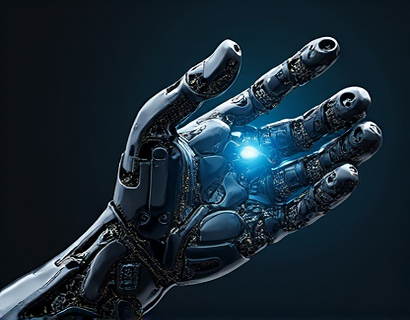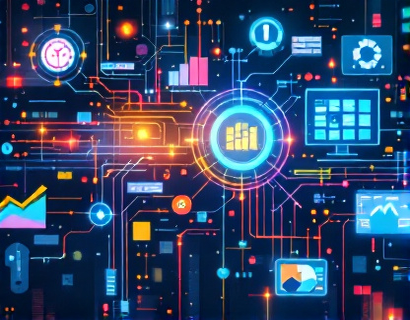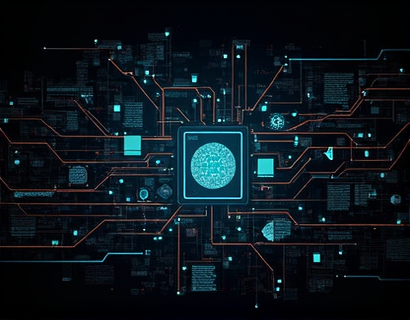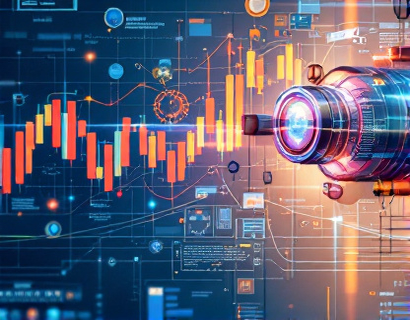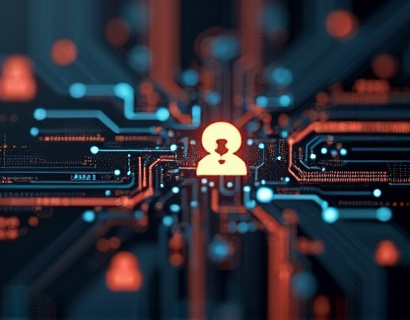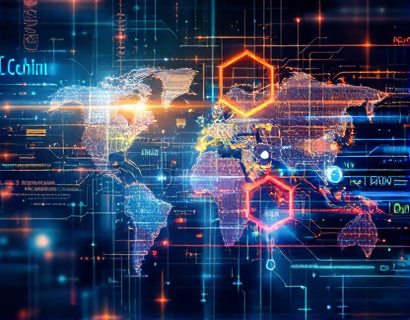Unlocking the Future of Digital Engagement: AI and Crypto Synergy for Enhanced User Experiences
The intersection of artificial intelligence and cryptocurrency is redefining the digital landscape, offering unprecedented opportunities for enhanced user experiences and innovative online interactions. This synergy is not just a technological curiosity but a transformative force that is reshaping how we engage with digital platforms and services. As we delve into this topic, we will explore the various ways AI and crypto are merging to create more interactive, secure, and efficient digital environments. This article is designed for tech enthusiasts, digital innovators, and anyone interested in the future of technology, providing insights into the potential and current applications of this powerful combination.
Understanding the Basics: AI and Crypto
To fully appreciate the impact of AI and crypto on digital engagement, it's essential to understand the fundamental concepts of each technology. Artificial intelligence, or AI, refers to the simulation of human intelligence processes by machines, particularly computer systems. These processes include learning, reasoning, problem-solving, perception, and language understanding. AI technologies such as machine learning, natural language processing, and computer vision are rapidly advancing, enabling more sophisticated and autonomous systems.
Cryptocurrency, on the other hand, is a digital or virtual currency that uses cryptography for security and operates on a decentralized network, typically a blockchain. Bitcoin, launched in 2009, was the first and most well-known cryptocurrency, but since then, thousands of alternative coins (altcoins) and tokens have emerged, each with unique features and use cases. The decentralized nature of cryptocurrencies eliminates the need for intermediaries, offering greater transparency, security, and control to users.
Enhancing Security through Cryptographic Techniques
One of the most significant contributions of crypto to digital engagement is the enhancement of security through cryptographic techniques. Blockchain technology, the backbone of cryptocurrencies, provides a tamper-proof ledger that records all transactions in a secure and transparent manner. This ensures that user data and transactions are protected from unauthorized access and manipulation. AI can further bolster security by detecting and mitigating potential threats in real-time, using advanced algorithms to identify patterns and anomalies that may indicate fraudulent activity.
For instance, AI-driven security systems can monitor blockchain networks for suspicious patterns, such as unusual transaction volumes or unexpected changes in network behavior. By integrating machine learning models, these systems can adapt and improve over time, becoming more effective at identifying and neutralizing threats. This synergy between AI and crypto not only safeguards user assets but also builds trust in digital platforms, encouraging more widespread adoption.
Personalization and User Experience
AI and crypto are also revolutionizing user experiences by enabling highly personalized interactions. In the traditional digital landscape, user experiences are often generic and one-size-fits-all, lacking the nuance and adaptability that modern users expect. AI algorithms can analyze vast amounts of user data to create detailed profiles, understanding preferences, behaviors, and needs. This data can then be used to tailor content, recommendations, and services to individual users, creating a more engaging and relevant experience.
In the context of cryptocurrencies, this personalization can extend to financial services. For example, AI-powered financial advisors can analyze a user's transaction history and financial goals to provide customized investment recommendations using cryptocurrency assets. This level of personalization not only enhances user satisfaction but also increases the utility and value of crypto-based services.
Decentralized Applications and Smart Contracts
Decentralized applications (dApps) and smart contracts are two of the most exciting developments at the intersection of AI and crypto. dApps are applications that run on a blockchain network, leveraging the decentralized nature of the technology to provide greater transparency, security, and user control. Unlike traditional apps hosted on centralized servers, dApps are resistant to censorship and downtime, ensuring a more reliable and resilient user experience.
Smart contracts are self-executing contracts with the terms of the agreement directly written into code. They automatically enforce and execute the terms of a contract when predefined conditions are met, eliminating the need for intermediaries. AI can enhance smart contracts by adding intelligent logic and decision-making capabilities. For example, an AI-powered smart contract can dynamically adjust terms based on real-time data, such as market conditions or user behavior, making the contract more adaptive and efficient.
These technologies together enable the creation of complex and sophisticated dApps that can range from decentralized finance (DeFi) platforms to gaming and social media applications. Users benefit from increased autonomy, transparency, and control over their data and assets, while developers have the tools to build more innovative and robust applications.
Fraud Detection and Prevention
Fraud is a persistent challenge in the digital world, affecting both traditional and cryptocurrency-based systems. AI and crypto combine to create powerful tools for fraud detection and prevention. Machine learning algorithms can analyze transaction patterns and user behavior to identify anomalies that may indicate fraudulent activity. By continuously learning from new data, these systems become more accurate over time, reducing false positives and improving overall effectiveness.
In the crypto space, AI can monitor blockchain transactions in real-time, flagging suspicious activities such as double-spending, wash trades, or large unusual transfers. This proactive approach to fraud prevention not only protects users and platforms but also enhances the reputation and reliability of cryptocurrency as a legitimate and secure form of digital currency.
Enhancing Interoperability and Integration
Interoperability is a critical aspect of the digital ecosystem, allowing different systems and platforms to communicate and work together seamlessly. AI and crypto are playing a pivotal role in breaking down silos and fostering greater integration. Blockchain-based protocols and standards, combined with AI-driven middleware, can enable different blockchain networks and traditional systems to interact and share data securely and efficiently.
For example, AI can facilitate the translation and mapping of data between different blockchain platforms, ensuring compatibility and consistency. This interoperability is essential for building a cohesive and interconnected digital landscape, where users can seamlessly transition between various services and applications without encountering barriers or compatibility issues.
Tokenization and Digital Asset Management
Tokenization, the process of converting assets into digital tokens on a blockchain, is another area where AI and crypto are making significant impacts. By tokenizing real-world assets such as real estate, art, or intellectual property, these assets become more liquid and accessible to a broader range of investors. AI can enhance tokenization by providing sophisticated valuation models, risk assessments, and market analysis, helping users make informed decisions.
Digital asset management is also transformed through the combination of AI and crypto. AI-powered portfolio management tools can analyze market trends, predict price movements, and optimize asset allocation using cryptocurrency assets. These tools can automate trading strategies, execute transactions, and monitor portfolio performance, providing users with a more efficient and effective way to manage their digital assets.
Conclusion: The Future of Digital Engagement
The synergy between AI and crypto is not just a technological trend but a fundamental shift in how we approach digital engagement. By leveraging the strengths of both technologies, we can create more secure, personalized, and interactive online environments. As these innovations continue to evolve, the potential for new applications and use cases is vast, promising a future where digital experiences are not only enhanced but fundamentally transformed.
For tech enthusiasts and digital innovators, the intersection of AI and crypto represents a fertile ground for exploration and development. By staying informed and embracing these technologies, we can contribute to building a more connected, secure, and user-centric digital world. The future is bright, and the possibilities are endless.





